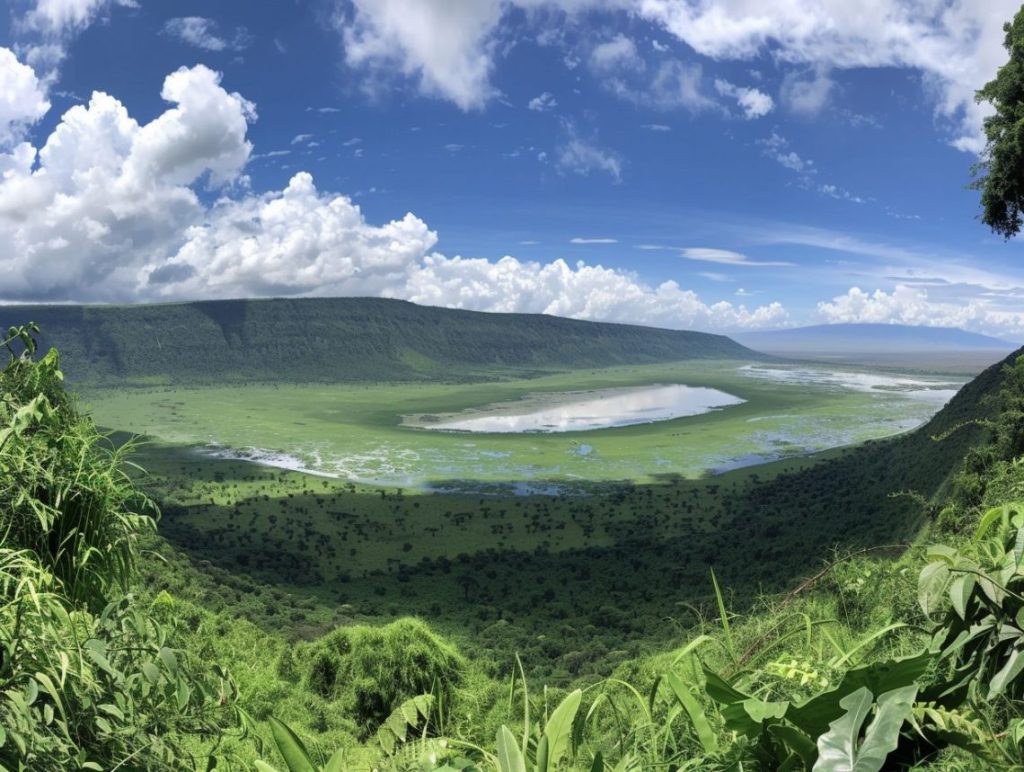Get To Know Ngorongoro Crater





Introduction to Ngorongoro Crater
The Ngorongoro Crater is one of Tanzania’s most remarkable natural wonders and a UNESCO World Heritage Site. Known for its breathtaking landscapes and diverse wildlife, the crater draws thousands of visitors each year who come to explore its unique ecosystem. This article will delve into what makes the Ngorongoro Crater special, how long to spend there, the reasons behind the absence of giraffes, and the limitations regarding swimming in the crater.
What Is Special About the Ngorongoro Crater?
The Ngorongoro Crater is often referred to as a “natural amphitheater” formed by the collapse of a volcano millions of years ago. Here are some of the key features that make this site special:
- Unique Ecosystem: The crater’s floor is home to an incredibly diverse range of wildlife, including the famous big five—lions, elephants, leopards, buffalo, and rhinoceroses. The varied habitats within the crater, from open grasslands to lush forests, support over 25,000 large mammals and more than 500 bird species.
- Scenic Beauty: The breathtaking landscapes of the Ngorongoro Crater, with its steep walls and vast, open plains, create a stunning backdrop for wildlife viewing. The panoramic views from the crater rim are equally spectacular, offering visitors a glimpse into this unique geological formation.
- Cultural Heritage: The Ngorongoro area is home to the Maasai people, who have lived in harmony with the land and its wildlife for centuries. Their rich culture and traditions add another layer of significance to the crater region.
How Long Do You Need in the Ngorongoro Crater?
Visitors typically spend one to two days exploring the Ngorongoro Crater. A single day allows for a comprehensive safari experience, where you can see many animals and enjoy the stunning landscapes. However, spending two days offers a more leisurely pace, allowing you to take in the sights, enjoy a picnic lunch in the crater, and possibly explore nearby attractions such as the Maasai villages or Olduvai Gorge.
Why Is There No Giraffe in Ngorongoro Crater?
While the Ngorongoro Crater is home to a variety of wildlife, giraffes are notably absent. This can be attributed to several factors:
- Habitat Preferences: Giraffes prefer open savannahs and woodlands where they can browse on acacia trees and other vegetation. The crater’s unique topography and the dense vegetation on its slopes do not provide the ideal habitat for them.
- Competition for Resources: The presence of other herbivores in the crater, such as buffalo and wildebeest, may lead to competition for food resources, making it less favorable for giraffes to thrive in this environment.
Can You Swim in the Ngorongoro Crater?
Swimming in the Ngorongoro Crater is not permitted due to several reasons:
- Wildlife Safety: The crater is a protected area with a diverse array of wildlife, and swimming would pose a risk to both visitors and animals. Water sources within the crater are critical habitats for many species, and human interference could disrupt their natural behavior.
- Preservation of the Ecosystem: The Ngorongoro Crater is a delicate ecosystem, and any activities that could alter the landscape or disturb wildlife are restricted. This helps maintain the integrity of the environment for future generations to enjoy.
Conclusion
The Ngorongoro Crater is a jewel of Tanzania, offering a unique combination of breathtaking landscapes, rich biodiversity, and cultural heritage. Whether you spend a day or two exploring this incredible destination, you are sure to create unforgettable memories. By understanding what makes the crater special, how to maximize your visit, and respecting its wildlife and ecosystems, you can fully appreciate the wonders of this natural marvel. Get ready to immerse yourself in the beauty and diversity of the Ngorongoro Crater on your next safari adventure!

One Comment